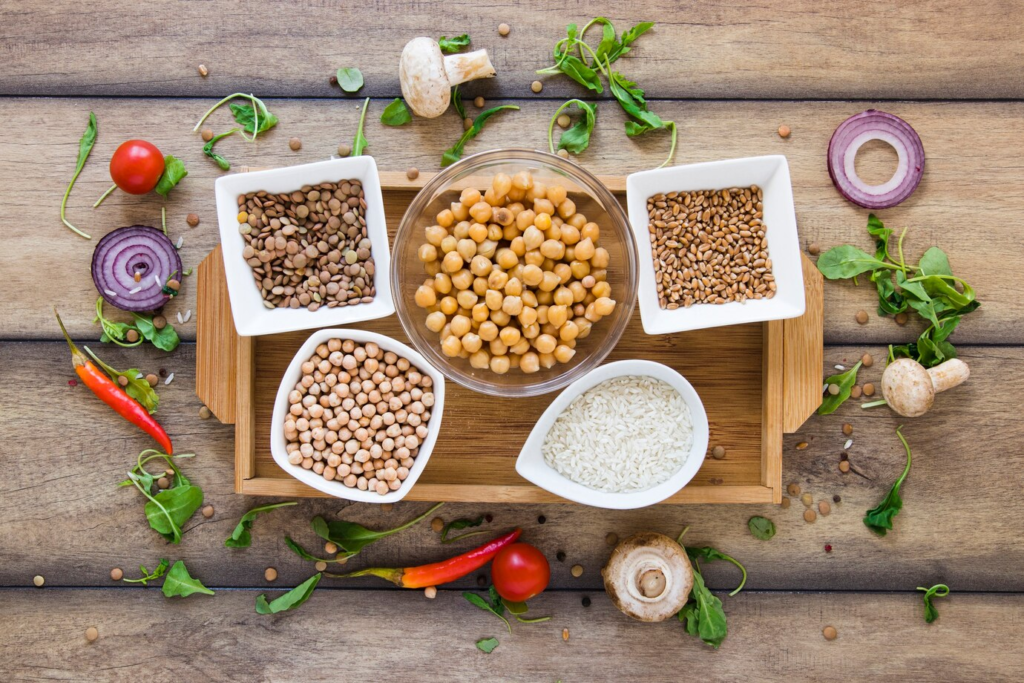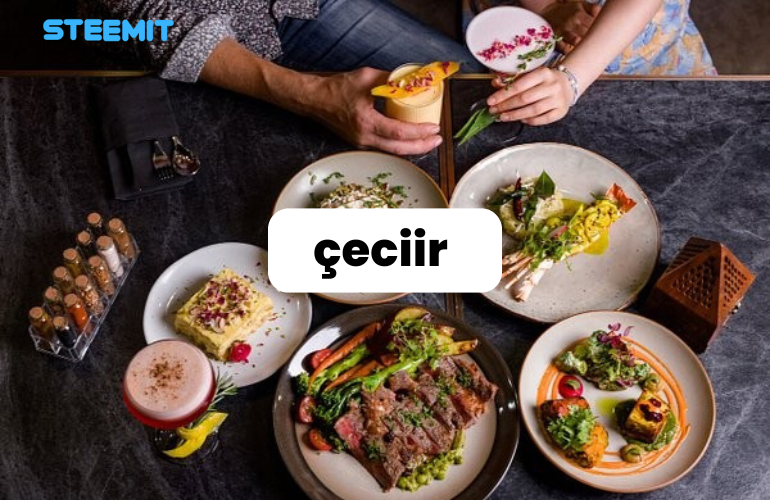Introduction
In Turkey, hospitality is an art form, and çeciir is its edible emblem. This humble yet iconic blend of roasted chickpeas, spices, and tradition has woven itself into the fabric of Turkish culture for centuries. Born from ancient Anatolian kitchens, çeciir transcends its role as a snack—it embodies communal bonds, celebrates heritage, and adapts effortlessly to modern tables. Rich in nutrients and steeped in symbolism, it bridges generations, from bustling street vendors to avant-garde chefs reimagining its possibilities. But how did this simple dish become a cornerstone of Turkish identity—and what secrets lie behind its enduring global appeal? Unwrap the story of çeciir, where every bite carries the warmth of tradition and the promise of innovation.
Historical Roots and Evolution of Çeciir
Çeciir’s story begins in the fertile crescent of Anatolia, where chickpeas—the dish’s cornerstone—have been cultivated for over 7,500 years. Archaeological evidence from sites like Çatalhöyük reveals charred chickpea remnants, underscoring their role in ancient diets. Early iterations of çeciir were simple: roasted chickpeas or fava beans seasoned with wild herbs, serving as portable sustenance for traders, soldiers, and nomadic tribes. Over time, this humble snack evolved into a cultural artifact, shaped by Anatolia’s history as a crossroads of empires, from the Hittites and Phrygians to the Byzantines and Ottomans.
The Ottoman Empire marked a turning point. As spices like cumin, sumac, and paprika flowed into Istanbul via the Silk Road, çeciir transformed from a rustic staple to a delicacy infused with complex flavors. Court chefs refined recipes, while street vendors popularized it as an affordable, energy-dense snack. By the 19th century, regional variations emerged: coastal towns added citrus zest, eastern provinces incorporated fiery Urfa pepper, and Aegean villages mixed in dried wild thyme.
The 20th century saw çeciir adapt to modernity. Urbanization turned it into a symbol of nostalgia, evoking rural roots for city dwellers. Today, chefs and food historians are reviving nearly forgotten recipes, such as sirkeli çeciir (chickpeas marinated in vinegar) from Ottoman manuscripts, blending ancient techniques with contemporary tastes. This duality—honoring tradition while embracing innovation—anchors çeciir’s enduring relevance, proving that even the simplest dishes can carry the weight of millennia.
Artisan Craftsmanship and Regional Diversity
The creation of çeciir is a testament to Turkey’s artisanal heritage, where time-honored techniques meet regional ingenuity. At its core, the dish relies on chickpeas or fava beans, soaked overnight and slow-roasted in copper pans over wood-fired ovens—a method unchanged for centuries. Artisans often hand-toss the legumes with olive oil and a carefully balanced blend of spices: earthy cumin, tangy sumac, smoky paprika, and a hint of citrus from dried orange peel. This ritualistic process, passed down through generations, ensures each batch carries a crisp texture and layers of flavor.

Turkey’s diverse geography breathes life into regional interpretations. In the Aegean coast, çeciir is brightened with lemon zest and wild oregano, mirroring the region’s sun-drenched landscapes. Eastern Anatolia embraces boldness, infusing fiery Urfa pepper and pomegranate molasses for a sweet-heat contrast. The Black Sea region adds a touch of the unexpected, incorporating toasted hazelnuts or anchovy powder, a nod to its maritime culture. Meanwhile, in Central Anatolia, simplicity reigns: chickpeas are roasted with nothing but salt and thyme, honoring the area’s pastoral roots.
Despite modernization, çeciir remains anchored in authenticity. Street vendors in Istanbul still roast beans in cast-iron drums, their rhythmic shaking echoing through bazaars, while home cooks preserve family recipes scribbled in weathered notebooks. Even contemporary chefs pay homage to tradition, using heritage grains or reviving ancient spice blends like çörek otu (black cumin) from Ottoman texts. This interplay of regional pride and artisanal dedication ensures that every bite of çeciir is not just a snack, but a journey through Turkey’s culinary soul.
Cultural Significance and Communal Traditions
In Turkey, çeciir is far more than a snack—it is a social ritual, a gesture of goodwill, and a thread that weaves communities together. Rooted in the Turkish principle of misafirperverlik (hospitality), offering çeciir to guests is akin to sharing a piece of one’s heritage. Whether served in ornate bowls during festive gatherings or handed as a warm paper cone by a street vendor, it embodies the Turkish ethos of generosity.
Community Bonding Through Shared Rituals
Çeciir thrives in moments of togetherness. During Ramadan, it graces iftar tables to break the fast, its protein-rich profile providing sustenance after sunset. In rural villages, women often gather to prepare large batches for weddings or harvest festivals, transforming cooking into a communal activity filled with storytelling and laughter. Even in urban cafes, it is a staple accompaniment to tea, sparking conversations among strangers turned friends.
A Symbol of Pride and Identity
Regional variations of çeciir are fiercely guarded as markers of local identity. In Gaziantep, a city renowned for its culinary legacy, spice blends are treated as family heirlooms. Meanwhile, coastal towns like Izmir boast of their citrus-infused recipes, tying the dish to the Aegean’s agrarian abundance. This pride extends beyond borders: Turkish diaspora communities worldwide recreate çeciir to stay connected to their roots, using it as a edible ambassador of their culture.
Festivals and Modern Celebrations
Annual events like the Antep Pistachio and Çeciir Festival celebrate the dish’s cultural weight, featuring competitions for the most innovative recipes. Younger generations, while embracing global food trends, reinterpret çeciir in vegan bowls or fusion dishes, proving its adaptability. Yet, even in modern twists, the essence remains—a reminder that food, at its heart, is about connection.
Çeciir’s enduring role in Turkish life underscores a universal truth: the simplest foods often hold the deepest meanings. As the article explores next, its nutritional richness further cements its place as a timeless staple.
Nutritional Powerhouse and Health Benefits
Çeciir’s appeal lies not only in its rich flavor but also in its remarkable nutritional profile, making it a staple for both tradition and modern wellness. At its foundation, chickpeas and fava beans—the dish’s primary ingredients—are packed with plant-based protein, fiber, and essential vitamins like folate, iron, and magnesium. When roasted, these legumes retain their nutrient density while gaining a satisfying crunch, offering a guilt-free snack that fuels the body and mind.
Aiding Digestive and Heart Health
The high fiber content in çeciir promotes gut health by aiding digestion and fostering beneficial gut bacteria. Chickpeas’ soluble fiber also helps regulate cholesterol levels, reducing the risk of cardiovascular diseases. Additionally, spices like cumin and sumac, commonly used in recipes, contribute antioxidants and anti-inflammatory properties. For instance, sumac’s anthocyanins combat oxidative stress, while cumin supports metabolism and blood circulation.
Weight Management and Blood Sugar Control
Low in calories yet high in protein, çeciir provides sustained energy and satiety, curbing overeating—a boon for weight management. Its low glycemic index stabilizes blood sugar spikes, making it a smart choice for diabetics. Modern studies highlight chickpeas’ role in improving insulin sensitivity, further cementing çeciir’s place in health-conscious diets.

Alignment with Modern Dietary Trends
As global preferences shift toward plant-based and gluten-free eating, çeciir effortlessly fits into these frameworks. Vegan diets embrace it as a protein-rich alternative to meat, while its natural gluten-free composition caters to those with sensitivities. Even athletes and fitness enthusiasts tout it as a portable, nutrient-dense snack for sustained energy.
From ancient sustenance to a modern superfood, çeciir proves that tradition and health can coexist. Its adaptability to contemporary needs ensures its relevance, bridging generations and dietary philosophies.
Modern Adaptations and Global Influence
Çeciir’s journey from Turkish hearths to global tables is a story of innovation and cross-cultural resonance. As chefs and food enthusiasts reimagine this ancient snack, it has emerged as a versatile ingredient in modern cuisine, bridging tradition with contemporary tastes.
Culinary Innovation and Fusion Dishes
In trendy kitchens worldwide, çeciir is being reinvented beyond its classic form. Celebrity chefs in cities like New York and London incorporate it into fusion dishes—think çeciir-crusted salmon or spiced çeciir hummus served with artisanal flatbreads. Vegan restaurants blend it into plant-based “cheese” spreads, while mixologists grind roasted chickpeas into savory cocktail rim blends. In Japan, chefs experiment with çeciir-studded sushi rolls, marrying its crunch with umami flavors. These creative adaptations honor its essence while appealing to global palates.
Gluten-Free Revolution
Çeciir’s natural gluten-free profile has positioned it as a star in allergen-conscious cooking. Food startups mill chickpeas into flour for baking, creating airy breads and decadent brownies that cater to gluten-sensitive consumers. In Australia, cafes use crushed çeciir as a crunchy topping for açai bowls, and in California, it’s baked into protein-packed energy bars. Social media amplifies these trends, with influencers sharing recipes like çeciir-crusted tofu or chocolate-covered çeciir clusters, driving its popularity among health-focused audiences.
Cross-Cultural Celebrations
International food festivals now spotlight çeciir as a symbol of Mediterranean wellness. At events like Madrid’s World Street Food Congress, Turkish vendors showcase modern twists, such as çeciir-infused ice cream or smoked paprika varieties. Meanwhile, diaspora communities in Berlin and Toronto host pop-up markets where çeciir stars in hybrid dishes—like çeciir poutine or kebabs with çeciir tabbouleh.
Health and Wellness Synergy
Aligning with the rise of plant-based and whole-food diets, çeciir thrives in wellness circles. Nutritionists tout it as a “smart snack” for its balance of protein and fiber, while fitness brands market it as pre-workout fuel. Its sustainability credentials—low water footprint compared to nuts—resonate with eco-conscious consumers, further boosting its global appeal.
As çeciir transcends borders, it retains its soul: a humble legume transformed by creativity and shared values. The final section explores how its sustainable roots and adaptability promise an even brighter future.
Sustainability and Future Prospects
Çeciir’s legacy is not just cultural—it is ecological. As the world grapples with climate change and resource scarcity, this ancient dish offers lessons in sustainability. Chickpeas and fava beans, the backbone of çeciir, are nitrogen-fixing crops that enrich soil health, reducing the need for synthetic fertilizers. Their deep root systems prevent erosion, while their low water requirements make them ideal for arid regions like Anatolia, where water conservation is critical. Farmers in Turkey’s Konya Basin, for instance, have revived heirloom chickpea varieties to combat drought, proving that tradition can drive modern resilience.

Empowering Local Economies
Small-scale farmers and cooperatives are at the heart of çeciir’s sustainable future. Organizations like the Anatolian Agricultural Development Cooperative work with rural communities to promote organic legume cultivation, ensuring fair wages and eco-friendly practices. These efforts not only preserve biodiversity but also empower women, who dominate smallholder farming in regions like Şanlıurfa. By linking çeciir production to global “farm-to-table” movements, Turkey positions itself as a leader in ethical agritourism.
A Blueprint for Global Food Systems
Çeciir’s adaptability aligns with the UN’s Sustainable Development Goals, particularly zero hunger and responsible consumption. Its plant-based profile addresses the carbon footprint of meat-heavy diets, while its gluten-free nature supports inclusive nutrition. Innovators are pushing boundaries: startups like Istanbul Grain Labs transform çeciir into biodegradable packaging materials, and urban farms in Berlin integrate chickpeas into vertical farming systems. Even global brands like Patagonia Provisions have explored chickpea-based snacks as part of their climate-conscious portfolios.
Future Horizons: Tradition Meets Tech
Looking ahead, çeciir is poised to bridge heritage and cutting-edge science. Researchers are developing drought-resistant chickpea strains using CRISPR technology, while blockchain platforms track çeciir’s supply chain to ensure transparency from farm to consumer. Culinary pioneers, meanwhile, experiment with fermentation techniques to enhance its probiotic potential. Yet, amid these advances, the essence remains unchanged—a humble legume that sustains both people and planet.
In a world hungry for solutions, çeciir stands as a testament to the power of tradition intertwined with innovation. Its story, rooted in Turkish soil, now blooms as a global symbol of resilience—a reminder that the foods we cherish can nourish not just bodies, but the future itself.
Conclusion
Çeciir is more than a snack—it is a living narrative of Turkey’s past, present, and future. From its ancient Anatolian origins to its modern reinventions, this humble blend of chickpeas and spices has transcended time, nourishing bodies, fostering community, and championing sustainability. It embodies the Turkish spirit of misafirperverlik, where generosity and connection are served in every handful. As global food systems seek balance between tradition and innovation, çeciir stands as a beacon: proof that cultural heritage can adapt, thrive, and inspire without losing its soul. Whether enjoyed on a bustling Istanbul street or reimagined in a cutting-edge kitchen, çeciir invites us to savor not just a taste of Turkey, but a timeless lesson—that the simplest foods often carry the deepest stories, waiting to be shared.





